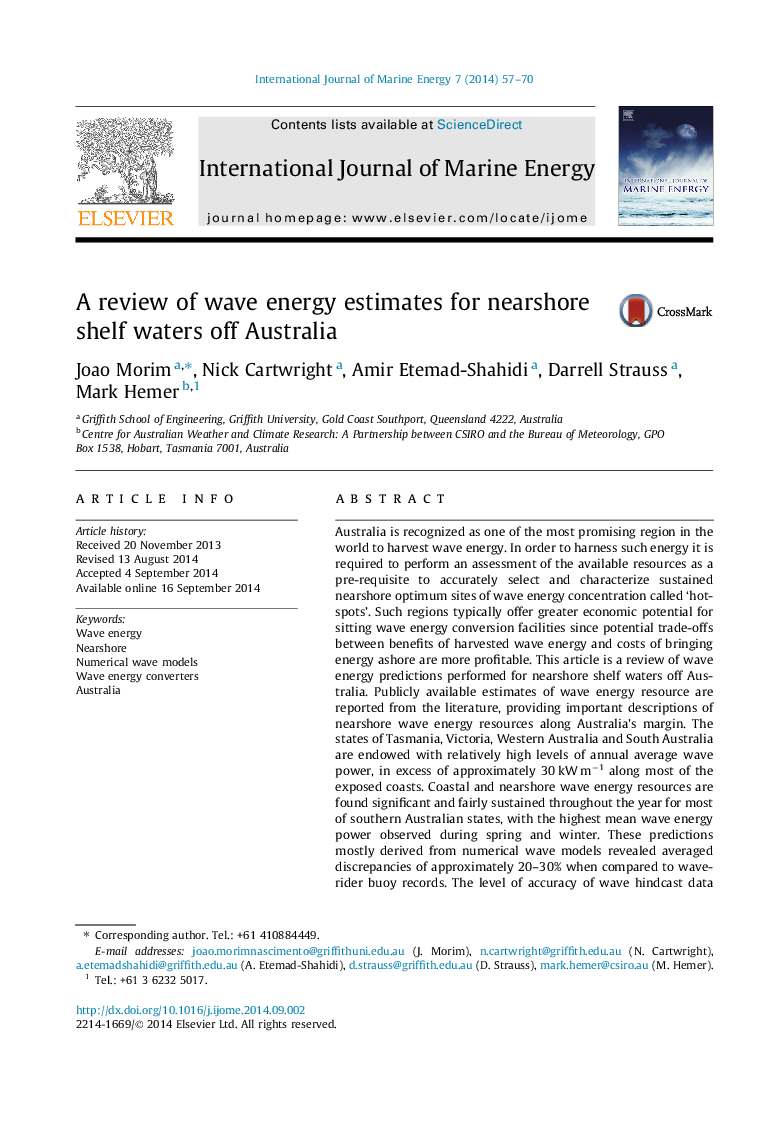| کد مقاله | کد نشریه | سال انتشار | مقاله انگلیسی | نسخه تمام متن |
|---|---|---|---|---|
| 1721751 | 1520428 | 2014 | 14 صفحه PDF | دانلود رایگان |
• It is the economics of wave energy extraction that will determine the future of wave energy in Australia.
• Simulated wave energy estimates showed averaged discrepancies around 20–30%.
• New South Wales and Queensland shelves have not yet been assessed using a high spatial resolution model.
• Future wave energy assessments of nearshore wave energy should be strongly observation dependent.
• Future wave energy assessments should be based on validated historical records of at least 10 years.
Australia is recognized as one of the most promising region in the world to harvest wave energy. In order to harness such energy it is required to perform an assessment of the available resources as a pre-requisite to accurately select and characterize sustained nearshore optimum sites of wave energy concentration called ‘hotspots’. Such regions typically offer greater economic potential for sitting wave energy conversion facilities since potential trade-offs between benefits of harvested wave energy and costs of bringing energy ashore are more profitable. This article is a review of wave energy predictions performed for nearshore shelf waters off Australia. Publicly available estimates of wave energy resource are reported from the literature, providing important descriptions of nearshore wave energy resources along Australia’s margin. The states of Tasmania, Victoria, Western Australia and South Australia are endowed with relatively high levels of annual average wave power, in excess of approximately 30 kW m−1 along most of the exposed coasts. Coastal and nearshore wave energy resources are found significant and fairly sustained throughout the year for most of southern Australian states, with the highest mean wave energy power observed during spring and winter. These predictions mostly derived from numerical wave models revealed averaged discrepancies of approximately 20–30% when compared to waverider buoy records. The level of accuracy of wave hindcast data used as boundary conditions (model input) and its suitability to describe Australia’s wave climate are found to be major reasons for that disparity. The densely populated coasts of New South Wales and Queensland are also found to be potential sites for wave energy harvesting, however, they have not yet been assessed for wave energy resources in nearshore shelf waters using a high spatial resolution wave transformation model. Lastly, using currently available WECs and Australian resource data the levelised cost of electricity (LCOE) of wave energy in the Australian southern coast has been calculated to be as low as ∼100 $/MWh and the capacity factor as high as ∼54%.
Journal: International Journal of Marine Energy - Volume 7, September 2014, Pages 57–70
